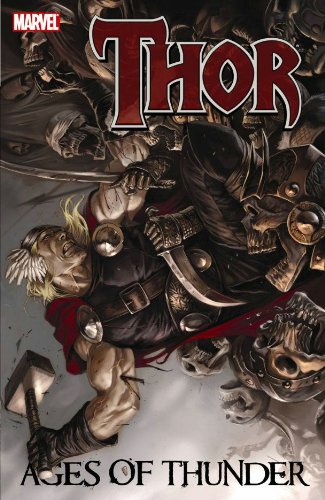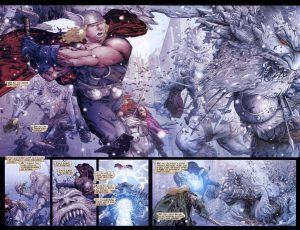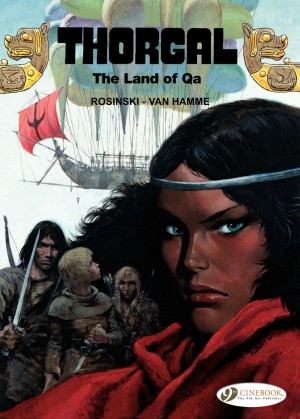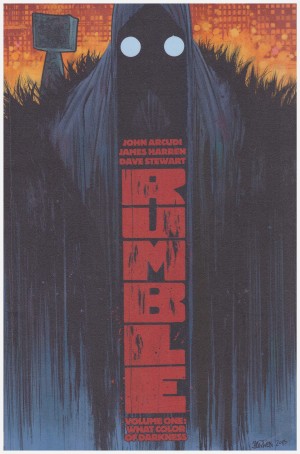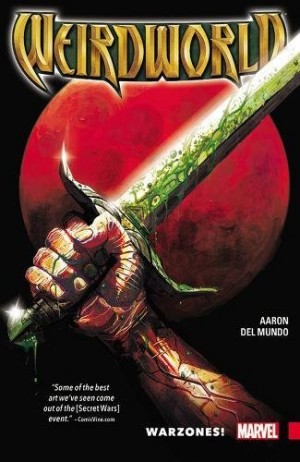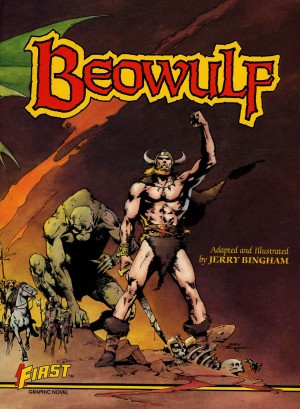Review by Frank Plowright
With these tales of Thor and the Asgardian gods, most set long before the present day, Matt Fraction moves Thor from superheroics into the fantasy or sword and sorcery genres, and both writer and character manage this shift very successfully indeed.
He uses the trappings, personnel and artefacts, but Fraction’s not actually adapting ancient Norse myths, yet his telling convinces you he is. It’s good writing and matched by the invention of the plots, and by the way they feed into a bigger picture. The short stories are satisfying as individual moments, yet there there are connections. These are both with each other, explaining, for instance, how enmity with the Frost Giants escalated, and they also have some connections with the wider Marvel universe as they pleasingly bring Thor up almost to the point at which he entered the modern mythos. That’s via a nice comment on the cyclical nature of Asgard.
Fraction’s gods aren’t heroic figures in any respect. They have their talents and have established supremacy over the nine worlds via the application of these talents. Worshippers are never seen. The Asgardians demand fealty from all they encounter, and if they don’t get it a hammer to the face is like as not the result. They’re petty minded, selfish, self-serving and vindictive, a characterisation extending to Thor.
Patrick Zircher contributes fully to the sense of wonder and awe. He’s always a decent superhero artist, but this moves his art several rungs up the quality ladder. The assorted mythical creatures and battles come to terrifying life, in a series of memorable images. Each time it’s assumed he’s delivered the best spread you’re going to see he tops it a few pages later. The Frost Giant on the opening page is brilliant, but the Blood Colossus has to be seen to be believed. This is coupled with excellent visual characterisation of the Asgardians. Clay Mann takes over for one of the stories, and while he has a sense of the epic in his layouts, he’s also far nearer traditional superhero art.
The fourth of these stories differs in several respects. It’s set in then present day continuity (a female Loki), beginning with recollections of Skurge, the Executioner, about whom everyone has a different memory. It’s on the same epic scale as the preceding tales, but marginally less successful, and that’s down to the decision to involve four artists with wildly different styles when consistency was surely the preferable option. Individually Dan Brereton’s distinctive painting, Doug Braithwaite’s solid storytelling, Michael Allred’s cartooning and Miguel Ángel Sepuvida’s fantasy stylings are all excellent, but the difference in tone between the four chapters is distracting and undermines matters.
Don’t let the comparative disappointment of Fraction’s later compromised run guiding Thor’s present day destiny put you off. Ages of Thunder is fantastic entertainment, and it’s insane that Marvel only ever issued it in hardcover, and then let this fall out of print in graphic novel form (although it is available digitally). With Thor a viable movie franchise Marvel should have been promoting this to all and sundry as one of the best Thor graphic novels.
